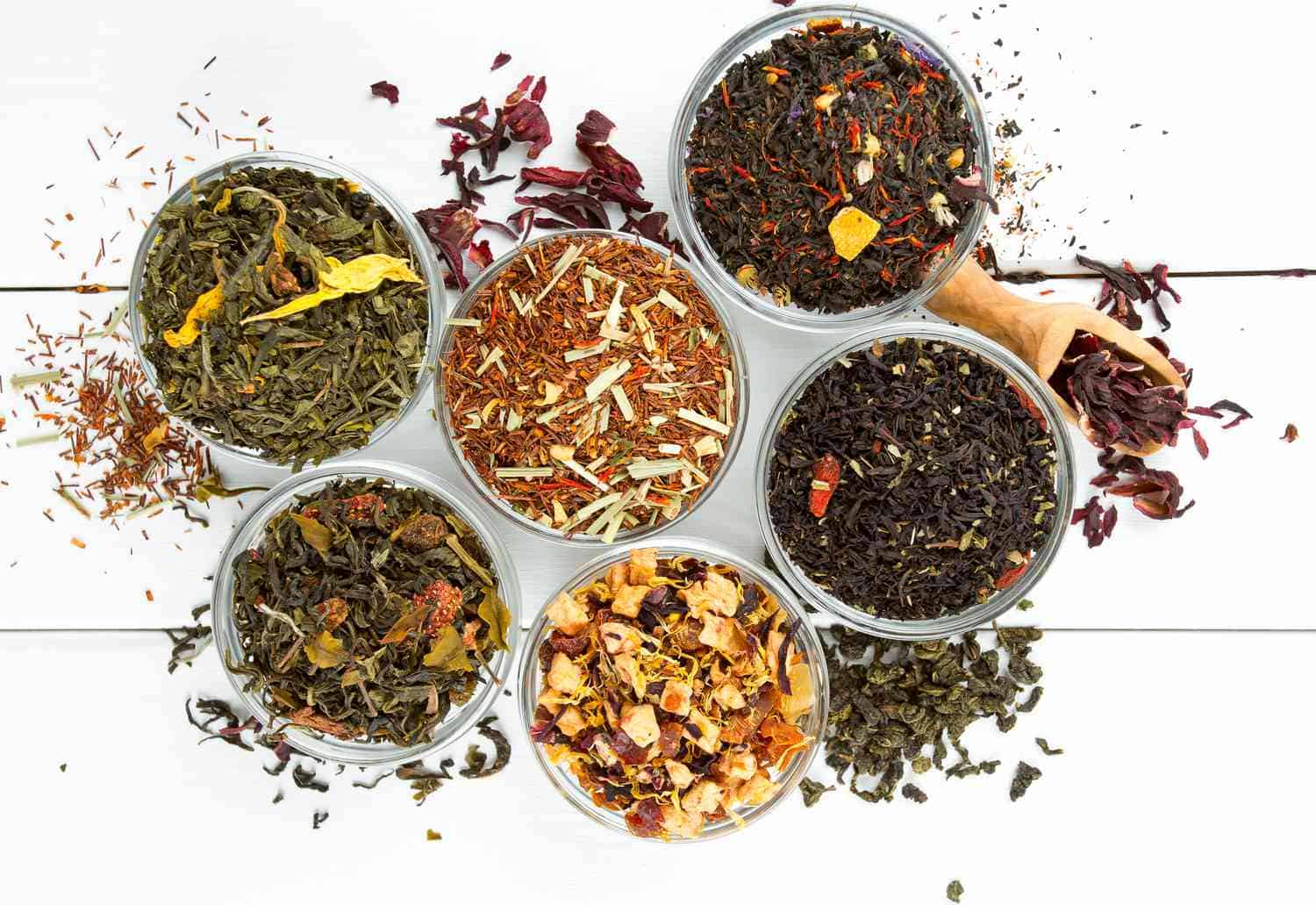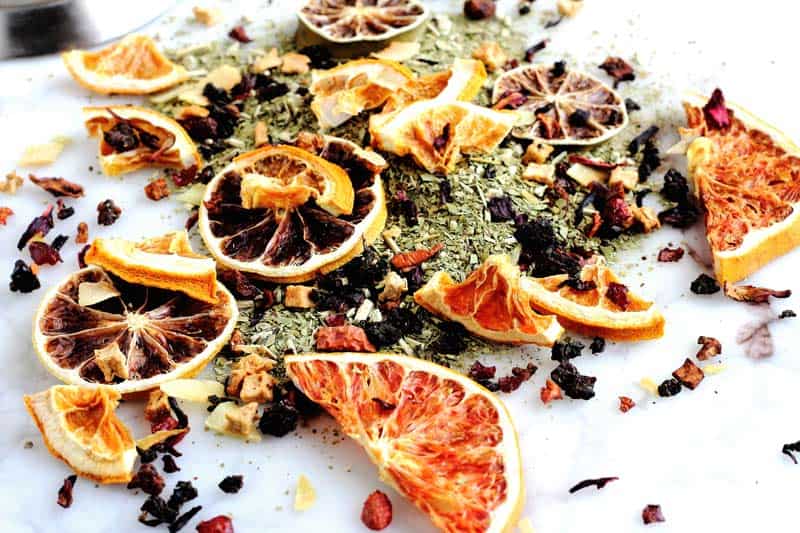Creating DIY tea blends allows for personalized combinations of various loose tea leaves, herbs, spices, and dried fruits, offering a tailored and flavorful tea experience suited to individual preferences and wellness goals.
Brewing Up Creativity: Designing Your Own Signature Tea Blends
The art of tea blending is a centuries-old practice that allows tea enthusiasts to create unique and personalized blends by combining different types of tea leaves, herbs, spices, and fruits. By experimenting with different flavors and ingredients, tea lovers can create their own signature blends that cater to their individual tastes and preferences. Not only does tea blending offer a creative outlet, but it also provides numerous benefits, including the ability to customize the strength, flavor, and health benefits of your tea.
Creating your own signature tea blends allows you to have complete control over the ingredients that go into your cup of tea. This means that you can avoid any artificial flavors or additives that may be present in store-bought teas. Additionally, blending your own tea allows you to experiment with different flavor combinations and create unique blends that are tailored to your specific tastes. Whether you prefer a bold and robust black tea blend or a delicate and floral green tea blend, the possibilities are endless when it comes to tea blending.
Choosing Your Base Tea
When it comes to tea blending, the first step is choosing the right base tea for your blend. There are several different types of tea leaves to choose from, including black, green, white, oolong, and herbal teas. Each type of tea has its own unique flavor profile and characteristics.
Black tea is known for its bold and robust flavor. It is fully oxidized and has a rich and malty taste. Green tea, on the other hand, is unoxidized and has a more delicate and grassy flavor. White tea is the least processed of all the teas and has a subtle and sweet flavor. Oolong tea falls somewhere in between black and green tea in terms of oxidation and has a complex and floral flavor. Herbal teas are not technically teas as they do not come from the Camellia sinensis plant. Instead, they are made from herbs, flowers, and fruits and offer a wide range of flavors and health benefits.
When choosing a base tea for your blend, consider the flavor profile you are aiming for. If you want a strong and robust blend, opt for a black tea. If you prefer a lighter and more delicate blend, choose a green or white tea. Oolong teas are great for creating blends with complex flavors, while herbal teas offer endless possibilities for creating unique and flavorful blends.
Exploring Flavor Profiles
Creating a balanced and flavorful tea blend requires an understanding of different flavor profiles. Each ingredient you add to your blend will contribute its own unique flavor, so it’s important to consider how these flavors will interact with one another.
Some common flavor profiles in tea blending include earthy, floral, fruity, spicy, and citrusy. Earthy flavors can be achieved by adding ingredients like roasted barley or dandelion root. Floral flavors can be achieved by adding ingredients like rose petals or lavender. Fruity flavors can be achieved by adding ingredients like dried berries or citrus peels. Spicy flavors can be achieved by adding ingredients like cinnamon or ginger. Citrusy flavors can be achieved by adding ingredients like lemon or orange zest.
When creating your own blends, it’s important to experiment with different combinations of flavors to find the perfect balance. Start with small quantities of each ingredient and gradually increase or decrease the amounts until you achieve the desired flavor profile. Keep in mind that some flavors may be more dominant than others, so it’s important to use them sparingly to avoid overpowering the blend.
The Importance of Quality Ingredients
The quality of the ingredients you use in your tea blends will greatly impact the taste and overall experience of your tea. It’s important to source the best herbs, spices, and fruits for your blends to ensure that you are getting the most flavor and health benefits from your ingredients.
When sourcing herbs and spices, opt for organic and sustainably sourced options whenever possible. This ensures that you are getting the highest quality ingredients that are free from pesticides and other harmful chemicals. Look for suppliers that have a good reputation and are transparent about their sourcing practices.
When it comes to fruits, choose fresh and ripe options for the best flavor. If using dried fruits, make sure they are free from added sugars or preservatives. It’s also important to properly store your ingredients to maintain their freshness and flavor. Keep herbs and spices in airtight containers away from heat and sunlight, and store dried fruits in a cool and dry place.
Mixing and Matching
One of the most exciting aspects of tea blending is the ability to experiment with different combinations of ingredients. Mixing and matching different flavors allows you to create unique and personalized blends that cater to your individual tastes.
When experimenting with different combinations, start with small quantities of each ingredient and gradually increase or decrease the amounts until you achieve the desired flavor. Keep track of the ratios you use so that you can replicate successful blends in the future.
It’s also important to consider how different flavors will interact with one another. Some flavors may complement each other, while others may clash. For example, floral flavors like rose or lavender pair well with citrusy flavors like lemon or orange. Spicy flavors like cinnamon or ginger pair well with fruity flavors like dried berries or apple. Experiment with different combinations to find the perfect balance of flavors.
The Role of Aromatics
Aromatics play a crucial role in tea blending as they add depth and complexity to your blends. Aromatics can be added in the form of essential oils, dried flowers, or herbs.
Essential oils are highly concentrated plant extracts that can add intense flavor and aroma to your blends. However, they should be used sparingly as they can easily overpower other flavors. When using essential oils, start with just a drop or two and adjust according to your taste.
Dried flowers, such as rose petals or chamomile, can add a subtle and delicate aroma to your blends. They can be used in combination with other ingredients to create unique and fragrant blends. Herbs like mint or lemongrass can also add a refreshing and aromatic touch to your teas.
When using aromatics, it’s important to consider how they will interact with the other flavors in your blend. Some aromatics may enhance certain flavors, while others may overpower them. Experiment with different combinations to find the perfect balance of aromatics in your blends.
Incorporating Health Benefits
In addition to creating delicious and flavorful blends, tea blending also allows you to incorporate health benefits into your teas. By adding superfoods and adaptogens to your blends, you can create teas that not only taste great but also provide a range of health benefits.
Superfoods are nutrient-dense foods that are rich in vitamins, minerals, and antioxidants. Some common superfoods that can be added to tea blends include matcha powder, turmeric, and spirulina. These ingredients not only add flavor but also provide a range of health benefits, such as boosting immunity and reducing inflammation.
Adaptogens are herbs that help the body adapt to stress and promote overall well-being. Some common adaptogens that can be added to tea blends include ashwagandha, rhodiola, and holy basil. These herbs can help reduce stress, improve mental clarity, and support the immune system.
When incorporating health benefits into your blends, it’s important to research the properties of each ingredient and understand how they will interact with other flavors. Start with small quantities of each ingredient and gradually increase or decrease the amounts until you achieve the desired flavor and health benefits.
Packaging and Presentation
Once you have created your signature tea blends, it’s important to package them in an eye-catching and memorable way. The packaging of your blends plays a crucial role in attracting customers and making your blends stand out on the shelf.
Consider using high-quality tea tins or jars to store your blends. These containers not only protect the tea from light and moisture but also add a touch of elegance to your product. Label your blends with clear and informative labels that include the name of the blend, the ingredients, and any brewing instructions.
You can also consider adding additional touches to your packaging, such as ribbons or stickers, to make your blends even more visually appealing. Consider using eco-friendly packaging materials whenever possible to appeal to environmentally conscious consumers.
The Business of Tea Blending
If you have a passion for tea blending, you may consider starting your own tea business or selling your blends online. The demand for unique and high-quality teas is growing, and there is a market for artisanal tea blends.
When starting your own tea business, it’s important to research the market and understand the preferences of your target audience. Consider conducting market research to identify potential customers and competitors. Develop a business plan that outlines your goals, target market, pricing strategy, and marketing plan.
When selling your blends online, consider creating an attractive and user-friendly website where customers can browse and purchase your products. Use social media platforms to promote your blends and engage with potential customers. Consider offering samples or hosting virtual tea tasting events to generate interest in your blends.
Sharing Your Creativity
Tea blending is not only a creative outlet but also a way to connect with others and share your passion for tea. Hosting tea tasting parties or sharing your blends with friends and family is a great way to get feedback and improve your blends.
Consider hosting a tea tasting party where you can showcase your signature blends and educate others about the art of tea blending. Provide tasting notes and brewing instructions for each blend and encourage guests to share their thoughts and preferences. This feedback can be invaluable in refining your blends and creating new ones.
You can also consider participating in tea blending competitions or joining tea blending communities to connect with other tea enthusiasts and learn from their experiences. Sharing your creativity with others not only allows you to receive valuable feedback but also fosters a sense of community and camaraderie among tea lovers.
Final Thoughts
The art of tea blending offers endless possibilities for creativity and self-expression. By creating your own signature tea blends, you can tailor your teas to your individual tastes and preferences. Whether you prefer bold and robust flavors or delicate and floral notes, tea blending allows you to experiment with different combinations of ingredients to create unique and personalized blends.
Don’t be afraid to step outside of your comfort zone and try new flavors and ingredients. The joy and satisfaction of creating your own signature tea blends are unparalleled. So grab your favorite tea leaves, herbs, spices, and fruits, and start blending!
Originally posted 2024-03-01 13:06:59.


